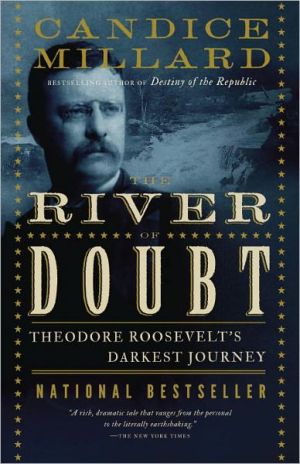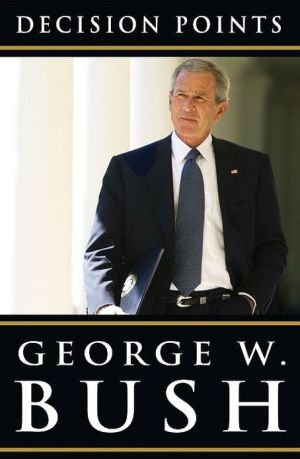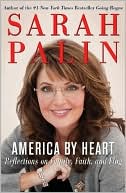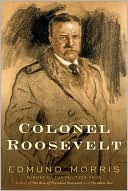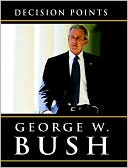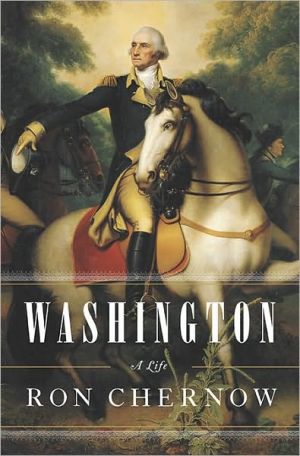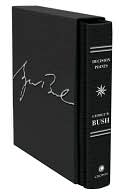River of Doubt: Theodore Roosevelt's Darkest Journey
At once an incredible adventure narrative and a penetrating biographical portrait, The River of Doubt is the true story of Theodore Roosevelt's harrowing exploration of one of the most dangerous rivers on earth. The River of Doubt-it is a black, uncharted tributary of the Amazon that snakes through one of the most treacherous jungles in the world. Indians armed with poison-tipped arrows haunt its shadows; piranhas glide through its waters; boulder-strewn rapids turn the river into a roiling...
Search in google:
The River of Doubt it is a black, uncharted tributary of the Amazon that snakes through one of the most treacherous jungles in the world. Indians armed with poison-tipped arrows haunt its shadows; piranhas glide through its waters; boulder-strewn rapids turn the river into a roiling cauldron.After his humiliating election defeat in 1912, Roosevelt set his sights on the most punishing physical challenge he could find, the first descent of an unmapped, rapids-choked tributary of the Amazon. Together with his son Kermit and Brazil s most famous explorer, Cândido Mariano da Silva Rondon, Roosevelt accomplished a feat so great that many at the time refused to believe it. In the process, he changed the map of the western hemisphere forever.Along the way, Roosevelt and his men faced an unbelievable series of hardships, losing their canoes and supplies to punishing whitewater rapids, and enduring starvation, Indian attack, disease, drowning, and a murder within their own ranks.... The New York Times Sunday Book Review - Bruce Barcott Although The River of Doubt sheds new light on one of the more exciting years in Theodore Roosevelt's life, bookstore clerks ought not to shelve it under biography. In her debut book, Millard, a former writer and editor for National Geographic, combines high adventure well told with dazzling passages of nature writing that illuminate the darkest, steamiest sections of the Amazon forest.
The Wide Belts\ By roughly two million years ago, humans had spread out of Africa and into Europe and Asia. Hundreds of thousands of years later, they migrated to Australia and New Guinea, which were then connected as a single continent. Because they did not yet have boats and could not endure the cruel cold of Siberia, tens of thousands of years more passed before they crossed the Bering Land Bridge and made their way into the Americas. When they finally began to populate North America, however, human beings quickly dispersed throughout the continent and, by crossing the Panamanian Land Bridge, soon reached South America. Some twelve thousand years ago, they entered the Amazon.\ In the eyes of the rest of the world, the humans who reached the Amazon Basin virtually disappeared. For thousands of years, there was no further contact with the Amazonians. Whereas most regions of the world continued to change and interact, to form new peoples and nations by fusing races and cultures, the inhabitants of the Amazon remained insular and isolated. Even in 1500, when European explorers began to land on the shores of South America, claiming the land for themselves and their kings and enslaving its aboriginal inhabitants, the continent’s vast interior remained untouched and its people unknown and unreachable.\ After the Spanish explorer Orellana finally penetrated the Amazon Basin in 1542, he returned with startling tales of dense jungles, deadly poisons, and, most astonishing of all, a tribe of vicious women warriors.\ The expedition’s chronicler, the Dominican friar Gaspar de Carvajal, described the women as going “about naked but with their privy parts covered, with their bows and arrows in their hands, doing as much fighting as ten Indian men.” Orellana named these women the Amazons, after the famed women warriors of Greek mythology, who were said to have removed their right breast so that they could more effectively shoot a bow and arrow. It is from the Greek word a-mazos, or “no breast,” that the word “Amazon” is derived.\ After Orellana, few outsiders disturbed the Amazon’s native peoples for the next two hundred years, In the mid-eighteenth century, however, things changed dramatically and, for the Amazon’s human inhabitants, disastrously. While traveling down the Amazon River from Ecuador, the French naturalist and mathematician Charles- Marie de La Condamine saw natives extracting a milky substance from a tall tree. After the strange liquid, which the Indians called caoutchouc, had coagulated, it was used to make everything from boots to bottles. La Condamine saw potential in caoutchouc and brought a sample with him back to France. When the strange, pliable substance made its way across the channel, the British soon discovered that it worked extremely well as an eraser, and so began referring to it as “rubber.” By the end of the eighteenth century, rubber was well known and widely used throughout Europe and the New World. By the middle of the nineteenth century, the Amazon was exporting more than 150 metric tons of it each year.\ La Condamine’s discovery meant great wealth for a few South Americans and Europeans, but nothing but sorrow and terror for Amazonian Indians. Settlers who had made their way to the Amazon in the hope of making their fortunes in rubber, quickly became frus- trated by the dearth of willing cheap labor and began to organize slaving expeditions. Already laid low by European diseases, many Indian tribes were nearly decimated by these expeditions. Those Indians who survived were perhaps even less fortunate than those who lost their lives. Rubber barons were notorious for treating their slave laborers with exceptional cruelty. Julio César Arana, the son of a Peruvian hatmaker who made millions of dollars harvesting and selling Amazonian rubber in the late nineteenth and early twentieth centuries, ordered his men to go into the rain forest with rifles to “recruit” Indians. The tens of thousands of men, women, and children whom they rounded up were shackled into chain gangs. If they did not make their quotas, Arana’s men would burn them alive, hang and quarter them, or shoot off their genitals. During the twelve years that Arana held his reign of terror along the banks of the Rio Putumayo, the native population plummeted from more than fifty thousand to less than eight thousand. Those who survived did so with horribly disabling and disfiguring wounds that became known as “la marca arana,” the mark of Arana.\ The Indians’ only advocates were the missionaries who had already established themselves in the Amazon by the early seventeenth century, searching for souls to save. They made an effort to protect their charges, but they were powerless against wealthy and merciless settlers such as Arana. Their best hope came in offering the Indians as wage laborers instead of slaves. The settlers, however, reverted back to slavery when they found that they could not get as many laborers as they needed and did not have as much control over them as they had had over their slaves. Even the missionaries themselves wanted to force the Indians into reductions, or missions, in which they were made to wear clothing and worship the Christian God.\ Before Rondon’s Indian Protection Service was established in 1910, and even after, the Indians’ best protector was the Amazon itself. So dense and dangerous was the rain forest that few white men were able to venture very far into it, even for the promise of rubber. Despite the intense search for Indians by the men who wanted their labor or their souls, several tribes had not yet had any contact with the outside world by the time Roosevelt reached South America in 1913. Even those who had had some limited contact with outsiders were so isolated by the jungle in which they lived that they did not have even the vaguest understanding of what the rest of the world looked like. “Such isolation makes it well nigh impossible for them to grasp the significance of large communities,” George Cherrie observed. “The distant villager is incapable of picturing a much larger group of human beings living together than that in his own tiny settlement. . . . They picture the rest of the world as one of jungles, great rivers, and vast seas; with here and there tiny pools of humanity no larger than their own. Thus it is that they look upon the stranger from afar as a traveller between villages.”\ * * *
\ From Barnes & NobleBarnes & Noble Discover Great New Writers\ A year after Teddy Roosevelt suffered defeat in his 1912 run for the White House, the audacious adventurer determined to renew his broken spirit with an investigative trip to South America. What began as a relatively mundane float down previously mapped terrain, however, became a much more dangerous journey into the unknown -- an expedition down a locally feared tributary of the Amazon known as the "River of Doubt."\ \ Millard's account of Roosevelt's unprecedented feat propels readers straight into the heart of the Amazon -- a place filled with hazards of every conceivable description. From vines, poisonous snakes, and piranhas to cannibals and duplicitous guides, Roosevelt was forced to bushwhack a path much more perilous than that of 20th-century politics, and faced unspeakable hardships. Poor planning led to improper food supplies and inadequate boats, and a succession of bow-breaking rapids meant days lugging supplies through the dense jungles.\ \ Roosevelt and his fellow explorers faced constant illness and disease, fear of attack from hostile tribes, drowning, starvation, and even mutiny within their own ranks. A raging, flesh-eating infection that reached its peak at the most treacherous point in the journey brought Roosevelt himself to the brink of death. But the expedition's labors would forge a new map of the world as well as a previously unplumbed strength of character, necessary for survival. (Holiday 2005 Selection)\ \ \ \ \ Shah TahirRoosevelt pulled through, and The River of Doubt reminds one of the man himself -- thorough, robust, extremely knowledgeable and triumphant. There are far too many books in which a travel writer follows in the footsteps of his or her hero -- and there are far too few books like this, in which an author who has spent time and energy ferreting out material from archival sources weaves it into a truly gripping tale.\ — The Washington Post\ \ \ Janet Maslin… The River of Doubt is not an ordinary biography. Its author, Candice Millard, is a credible historian as well as a former writer and editor for National Geographic. She pays keen attention to nature, human and otherwise, in this vigorous, critter-filled account of Roosevelt's last epic journey: a white-water voyage through the Brazilian rain forest and the deep unknown.\ — The New York Times\ \ \ \ \ Bruce BarcottAlthough The River of Doubt sheds new light on one of the more exciting years in Theodore Roosevelt's life, bookstore clerks ought not to shelve it under biography. In her debut book, Millard, a former writer and editor for National Geographic, combines high adventure well told with dazzling passages of nature writing that illuminate the darkest, steamiest sections of the Amazon forest.\ — The New York Times Sunday Book Review\ \ \ \ \ Publishers WeeklyFerrone's gravelly, stentorian, hushed voice sounds downright presidential in reading the story of this little-known event from ex-Commander-in-Chief Theodore Roosevelt's postpolitical life. After losing his third-party run for the 1912 presidential election, Roosevelt agreed to accompany a Brazilian explorer on a trip along the Amazon, hoping to map the river's uncharted path. Expecting an uneventful trip, Roosevelt and his party barely managed to escape with their lives. Ferrone adopts a strange tone when providing Roosevelt's voice, attempting to echo his famously brusque boom and sounding oddly strangled in the process. His reading is on steadier ground in conveying the sweep of Millard's prose, uniting the personal drama of the Roosevelt family with the naturalist investigations of the voyage. Ferrone carries the narrative along on the waves of his own raspy, gruff instrument, shuttling readers through Millard's book with a steely self-assurance reminiscent of its subject. Simultaneous release with the Doubleday hardcover (Reviews, July 11). (Nov.) Copyright 2006 Reed Business Information.\ \ \ \ \ Library JournalWhenever fate dealt him a blow, Theodore Roosevelt struck back by taking on a new physical challenge. Millard, formerly with National Geographic, charts how TR dealt with his "third term" loss for the White House in 1912: he accepted a lecture invation to Buenos Aires and followed it with a dangerous expedition deep into the Amazon in search of a remote tributary known as the River of Doubt. Millard's book has four central characters, each vividly brought to life: the 55-year-old ex-president; the celebrated Brazilian explorer Col. Candido Rondon; TR's 24-year-old second son, Kermit; and the Amazon rain forest itself, which nearly doomed the two dozen members of the expedition. From the outset, the three men had different goals. For TR it was his "last chance to be a boy" and to become a genuine explorer, for Rondo it was an opportunity to survey properly the river he had discovered in 1909, and for Kermit it was a duty to his mother, who worried about her aging husband. The expedition encompassed miles of impassable rapids, loss of canoes and supplies, malaria, near-starvation, cannibalistic Indians, deadly snakes and insects, and a murderous porter. Millard turns this incredible story into one that easily matches an Indiana Jones screen adventure. Essential.-William D. Pederson, Louisiana State Univ., Shreveport Copyright 2005 Reed Business Information.\ \ \ \ \ Kirkus ReviewsThe 26th U.S. president, failing re-election, has an adventure that nearly kills him. In an admirable debut, historian Millard records Theodore Roosevelt's exploration of a hitherto uncharted river in the heart of the Mato Grosso. A confluence of circumstances, including a South American speaking tour and the eagerness of others to investigate the Amazonian headwaters, brought Teddy, aged 55 and still bold and plucky, to Brazil, then largely unmapped and unknown. When the opportunity came to change a planned route to follow the uncharted course of the ominously named River of Doubt, the former chief executive seized it eagerly. And so, with devoted son Kermit and truly intrepid Brazilian co-commander Candido Rondon, along with a band of hardy recruits, the party plunged into the fierce, fecund jungle and its unknown dangers. (It's an exploit that standard TR biographies generally treat lightly, if at all). With heavy, useless equipment and inappropriate provisions, the Roosevelt-Rondon Expedition ventured into the luxuriant wilderness where every life form threatened. There were pit vipers, piranhas and tiny fish that attack where a man is most vulnerable. There were poisonous plants, malevolent insect swarms and native warriors, ever present and never seen. The beefy former president must have embodied some prime cuts for the cannibals as he sat in his canoe. Eventually Colonel Roosevelt was downed by injury and fever. He ended his journey emaciated at three-quarters of the weight he started with on the watercourse now found in atlases as the Roosevelt River. Millard tells the story wonderfully, marshaling ecology, geography, human and natural history to tell the tale of the jungleprimeval, of bravery and privation, determination and murder in the ranks as cowboy Roosevelt survived the Indians of the Amazon. Teddy Roosevelt's tropical adventure, splendidly related.\ \
